20.03.2021

ESA’s Lunar Pathfinder mission to the Moon will carry an advanced satellite navigation receiver, in order to perform the first ever satnav positioning fix in lunar orbit. This experimental payload marks a preliminary step in an ambitious ESA plan to expand reliable satnav coverage – as well as communication links – to explorers around and ultimately on the Moon during this decade.
Due for launch by the end of 2023 into lunar orbit, the public-private Lunar Pathfinder comsat will offer commercial data relay services to lunar missions – while also stretching the operational limits of satnav signals.
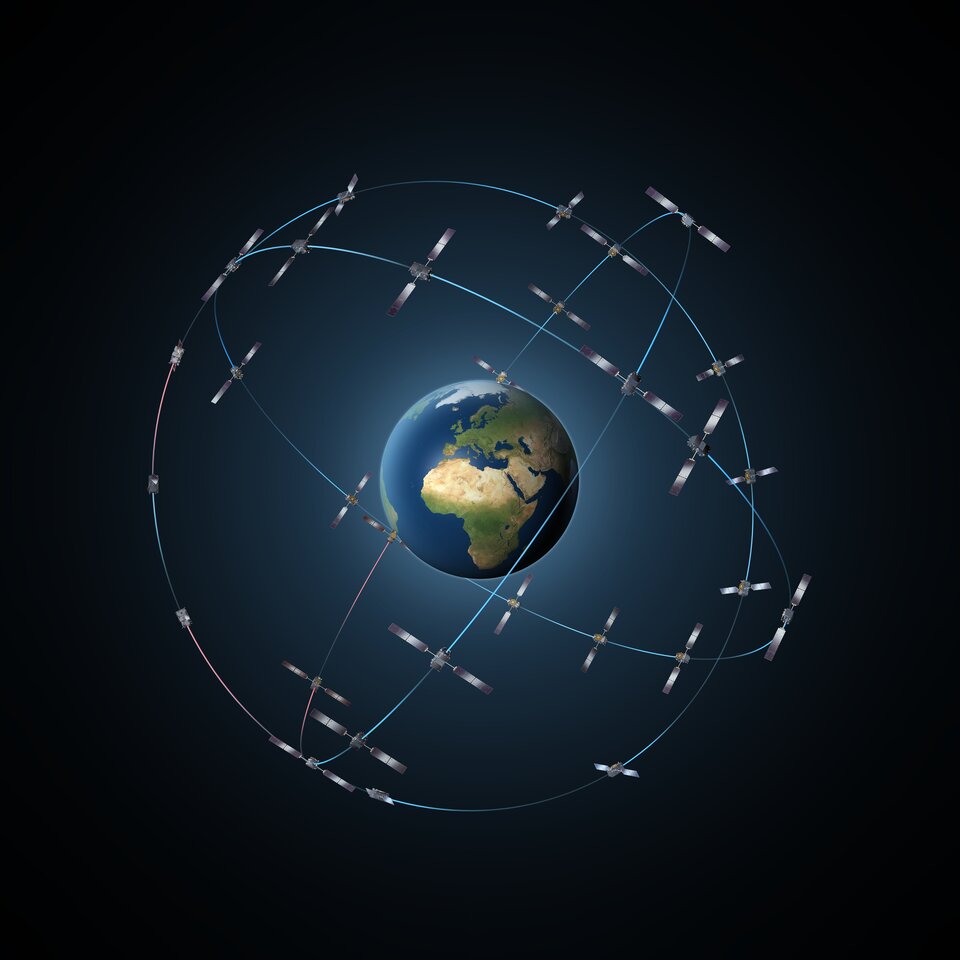
Navigation satellites like Europe’s Galileo constellation are intended to deliver positioning, navigation and timing services to our planet, so most of the energy of their navigation antennas radiates directly towards the Earth disc, blocking its use for users further away in space.
“But this is not the whole story," explains Javier Ventura-Traveset, leading ESA’s Galileo Navigation Science Office and coordinating ESA lunar navigation activities. "Navigation signal patterns also radiate sideways, like light from a flashlight, and past testing shows these antenna ‘side lobes’ can be employed for positioning, provided adequate receivers are implemented.”
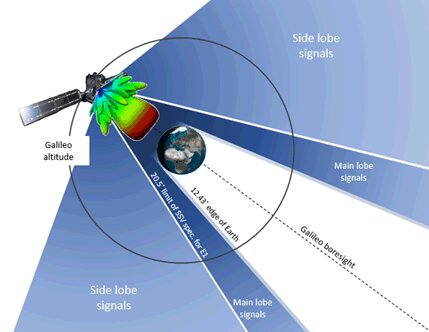
Just like people or cars on the ground, satellites in low-Earth orbit rely heavily on satnav signals to determine their orbital position, and since ESA proved higher-orbit positioning was possible, a growing number of satellites in geostationary orbit today employ satnav receivers.
But geostationary orbit is 35 786 km up, while the Moon is more than ten times further away, at an average distance of 384 000 km. In 2019 however, NASA’s Magnetospheric Multiscale Mission acquired GPS signals to perform a fix and determine its orbit from 187 166 km away, close to halfway the Earth-Moon distance.
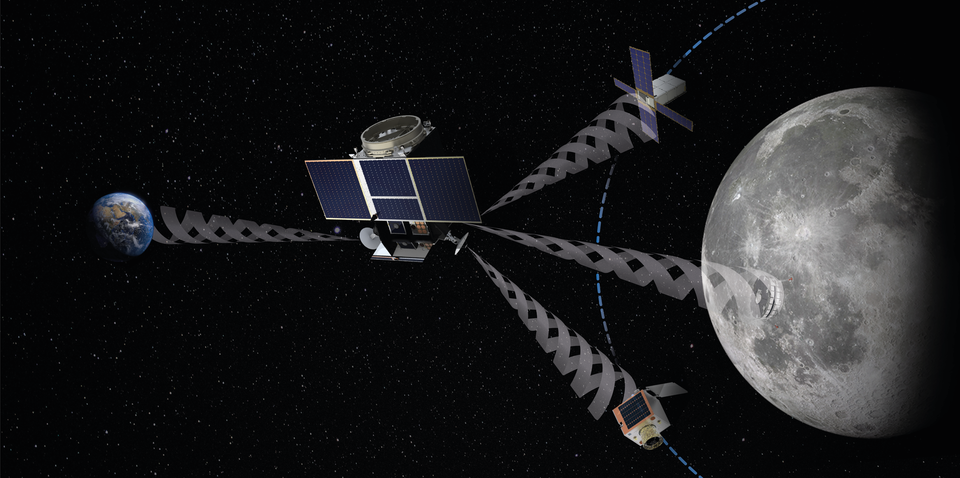
Javier adds: "This successful experimental evidence provides us high confidence since the receiver we will embark on Lunar Pathfinder will have a significantly improved sensitivity, employ both Galileo and GPS signals and will also feature a high-gain satnav antenna.”
This high sensitivity receiver’s main antenna was developed through ESA’s General Support Technology Programme, with the receiver’s main unit developed through ESA’s Navigation Innovation and Support Programme, NAVISP.
The receiver project is led by ESA navigation engineer Pietro Giordano: “The high sensitivity receiver will be able to detect very faint signals, millions of times weaker than the ones received on Earth. The use of advanced on-board orbital filters will allow to achieve unprecedented orbit determination accuracy on an autonomous basis.”
Lunar Pathfinder’s receiver is projected to achieve positioning accuracy of around 100 m – more accurate than traditional ground tracking.
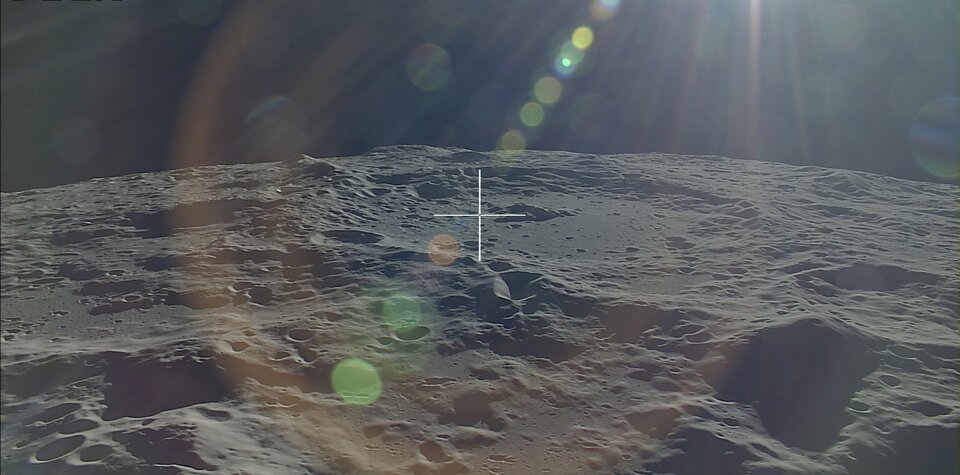
The availability of satnav will allow the performance of ‘Precise Orbit Determination’ for lunar satellites, notes Werner Enderle, Head of ESA’s Navigation Support Office: “Traditional orbit determination for lunar orbiting satellites is performed by radio ranging, using deep space ground stations. This Lunar Pathfinder demonstration will be a major milestone in lunar navigation, changing the entire approach. It will not only increase spacecraft autonomy and sharpen the accuracy of results, it will also help to reduce operational costs.”
While lunar orbits are often unstable, with low-orbiting satellites drawn off course by the lumpy mass concentrations or ‘mascons’ making up the Moon , Lunar Pathfinder is planned to adopt a highly-stable ‘frozen’ elliptical orbit, focused on the lunar south pole – a leading target for future expeditions.
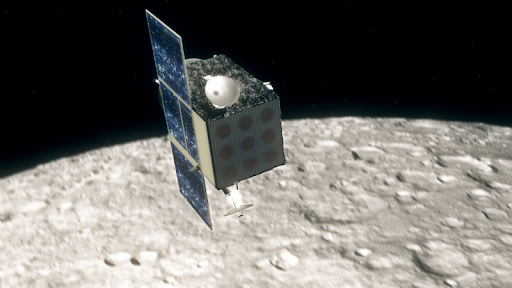
Earth – and its satnav constellations – should remain in view of Lunar Pathfinder for the majority of testing. The main challlenge will be overcoming the limited geometry of satnav signals all coming from the same part of the sky, along with the low signal power.
Lunar Pathfinder's demonstration that terrestrial satnav signals can be employed to navigate in lunar orbits will be an important early step in ESA’s Moonlight initiative. Supported through three ESA Directorates, Moonlight will go on to establish a Lunar Communication and Navigation Service.


